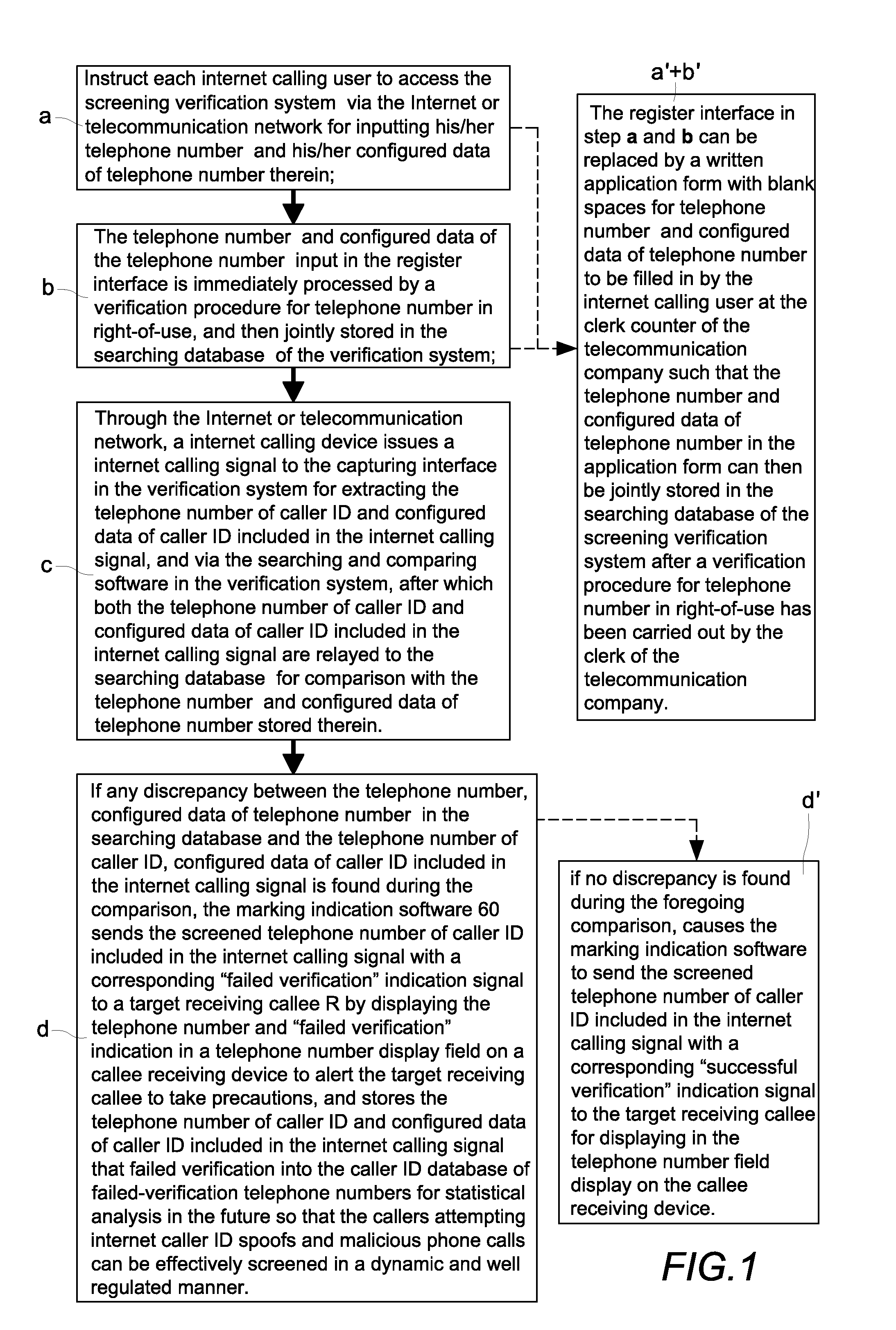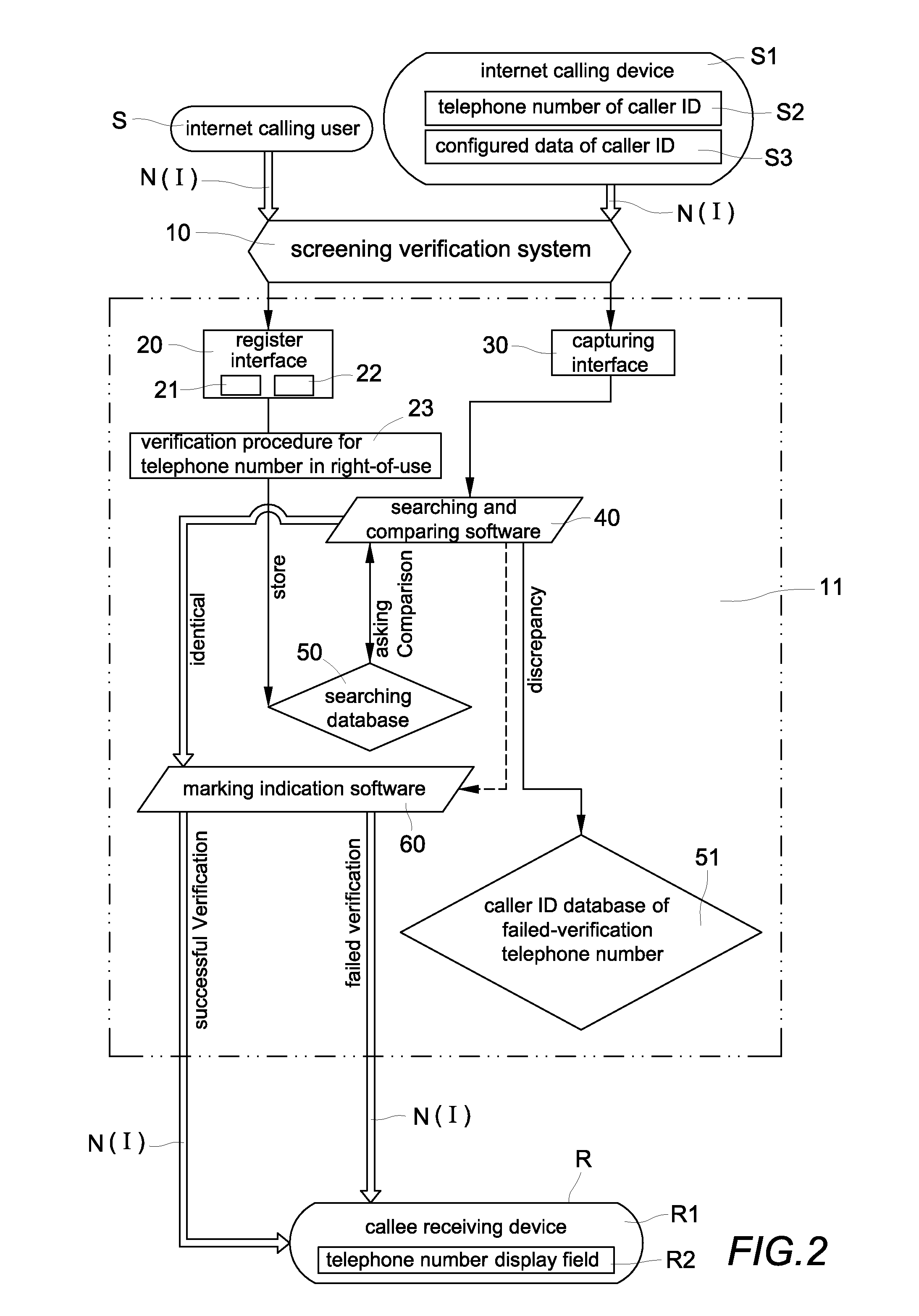Verification method and system for screening internet caller id spoofs and malicious phone calls
a verification system and caller id technology, applied in the field of verification system for screening internet caller id spoofs and malicious phone calls, can solve the problems of increasing the number of victims of telephone fraud, and increasing the number of taiwanese phone fraud, so as to reduce the number of fraudulent telephone calls, prevent caller id spoofing frauds, and reduce undue blocking
- Summary
- Abstract
- Description
- Claims
- Application Information
AI Technical Summary
Benefits of technology
Problems solved by technology
Method used
Image
Examples
Embodiment Construction
[0026]Please refer to FIGS. 1 and 2, which are a flowchart of the processing steps and a systematic processing block diagram of a preferred exemplary embodiment of a verification method and system for screening internet caller ID spoofs and malicious phone calls of the present invention. The verification system for screening internet caller ID spoofs and malicious phone calls” includes a screening verification system 10, a register interface 20, a capturing interface 30, a searching and comparing software 40, a searching database 50, a caller ID database of failed-verification telephone numbers 51 and a marking indication software 60. A preferred verification method for screening internet caller ID spoofs and malicious phone calls is implemented on the system of FIG. 2 and includes the following processing steps:
[0027]a. Instruct each internet calling user S to access the screening verification system 10 via the Internet I or telecommunication network N for inputting his / her telepho...
PUM
 Login to View More
Login to View More Abstract
Description
Claims
Application Information
 Login to View More
Login to View More - R&D
- Intellectual Property
- Life Sciences
- Materials
- Tech Scout
- Unparalleled Data Quality
- Higher Quality Content
- 60% Fewer Hallucinations
Browse by: Latest US Patents, China's latest patents, Technical Efficacy Thesaurus, Application Domain, Technology Topic, Popular Technical Reports.
© 2025 PatSnap. All rights reserved.Legal|Privacy policy|Modern Slavery Act Transparency Statement|Sitemap|About US| Contact US: help@patsnap.com



